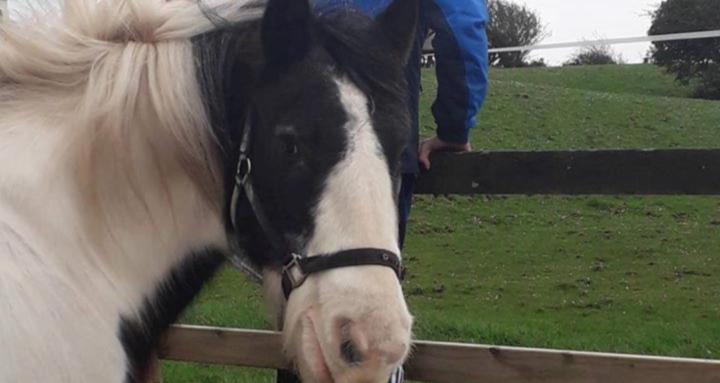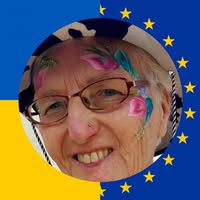Eye to Eye: True Connection Starts on the Ground
For thousands of years, horses have stood alongside humans. They have shaped our societies, cultures, and even our myths. They ploughed our fields, carried us into battle, pulled our carts, and gave us speed long before the invention of engines. Ancient civilisations revered the horse not only as a work animal but as a symbol of power, freedom, and partnership.
Today, most of us no longer depend on horses for daily work. Instead, we have the opportunity to meet them in a new way, not as tools or transport, but as teachers.
When we move away from the concept of horses as functional tools and meet them as sentient beings they offer us something extraordinary: the chance to learn about our true selves.
Why Groundwork is the Classroom
Riding has traditionally been the most visible way of interacting with horses. From the saddle, we direct where the horse goes, how fast, and in what outline. While (at best) this can be a dance of harmony, it stems from the human setting the agenda.
Interacting with a horse on the ground changes everything.
On the ground, we meet the horse at eye level. We step into their space, not to control, but to connect, listen and understand. We are all on our feet, connected to the earth, sharing the same physical plane.
This reminds us that we, like the horse, are part of nature, and invites us to be present, steady, and rooted in the moment. Here, the horse sets the pace of the interaction. They show us, through their honest, moment-to-moment responses, who we are and how we are showing up.
What Horses Teach Us Eye to Eye
1. Authenticity and Presence
Horses live entirely in the present. They don’t dwell on yesterday or plan tomorrow. When we step into their space distracted or tense, they notice immediately. Their response teaches us to return to presence, regulate our energy, and meet them in the here and now.
2. Self-Awareness
Horses are mirrors. They reflect our emotions, energy, and intentions with complete honesty and no judgement. If we are anxious, they may not want to engage. If we are calm and centred, they are more likely to soften and connect. This gives us real-time feedback about what we are feeling and the energy we are giving - even when we haven’t yet named it ourselves.
3. Boundaries and Leadership
A horse’s natural herd behaviour teaches us about clear, respectful boundaries. They respond best when we are consistent and confident, not forceful or hesitant. They help us explore how we express leadership, ask for space, or invite connection . We can take these essential skills back into our human relationships.
4. Emotional Regulation
Horses thrive around calm, grounded energy. When we learn to slow our breathing, centre ourselves, and release tension, horses often relax with us. This co-regulation is a powerful lesson in how to shift our own state in the face of stress or challenge.
5. Resilience and Problem-Solving
Sometimes, a horse won’t respond the way we expect. Instead of pushing harder, we are invited to get curious, adjust our approach, and try again. This teaches flexibility, patience, curiosity, and creative problem-solving. These are powerful skills that go far beyond the arena.
The Role of Experiential Learning
Equine-Assisted Personal Development (EAPD) turns these interactions into a rich, facilitated learning process. Under the guidance of a qualified coach, the person is encouraged to pause, notice what the horse is showing them, and explore what it might mean in their own life.
The learning is experiential which means that it is felt in the body rather than simply talked about. The insights tend to be deep and lasting. Clients often describe moments of sudden clarity:
- Realising how their posture or tone affects others
- Recognising limitiing beliefs or patterns
- Discovering a new way to set boundaries or ask for what they need
- Feeling what it’s like to be truly calm, centred, and connected
These lessons cannot be taught academically, They are discovered in the moment, in partnership with the horse, and carried forward into daily life.
Why It Happens Best on the Ground
While riding can also be a place of growth, interacting with a horse on the ground keeps the focus squarely on relationship rather than performance. There is no goal of trotting circles or perfect transitions - just the question:
‘What is this horse showing me right now, and what can I learn from it?’
This creates space for deeper reflection, gentler experimentation, and a more equal partnership where the horse has a voice in the process.
Honouring the Horse as Co-Facilitator
When we engage with our horses on the ground with respect and curiosity, we are not ‘training’ a horse to behave. Instead, we are listening to what they have to teach us. Each interaction becomes a two-way conversation where the horse offers feedback, and we respond with awareness.
This is what makes horses such powerful teachers: they do not lie, flatter, or criticise. They simply show us what is true in the moment.
If we are willing to see it!
Final Thoughts
For centuries, horses have carried us—literally and figuratively. Now they offer to carry us into a deeper understanding of ourselves.
On the ground, in the quiet space of shared presence, horses teach us to breathe, to feel, to lead, and to trust. They help us discover who we really are when we are fully present, authentic, and connected.
If you are seeking personal growth, resilience, or simply a new perspective on yourself, step into the arena—not to ride, but to learn. The horse is waiting, ready to teach.
Perfect — adding reflection prompts will make the piece even more practical and engaging.Here’s the final version of the article, now with a short guided section at the end for readers to take the learning further:
Horses as Teachers: Learning About Ourselves on the Ground
For thousands of years, horses have stood alongside humans—shaping our societies, cultures, and even our myths. They ploughed our fields, carried us into battle, pulled our carts, and gave us speed long before the invention of engines. Ancient civilisations revered the horse not only as a work animal but as a symbol of power, freedom, and partnership.
Today, most of us no longer depend on horses for daily work. Instead, we have the opportunity to meet them in a new way—not as tools or transport, but as teachers. When we step off their backs and into their world, horses offer us something extraordinary: the chance to learn about ourselves.
Why Groundwork is the Classroom
Riding has traditionally been the most visible way of interacting with horses. From the saddle, we direct where the horse goes, how fast, and in what frame. While this can be a dance of harmony, it starts with the human setting the agenda.
Groundwork changes everything. When we connect on the ground, we meet the horse at eye level. We step into their space, not to control, but to listen. Here, the horse sets the pace of the lesson. They show us, through their honest, moment-to-moment responses, who we are being and how we are showing up.
What Horses Teach Us on the Ground
Authenticity and Presence
Horses live entirely in the present. They don’t dwell on yesterday or plan tomorrow. When we step into their space distracted or tense, they notice immediately. Their response—whether they walk away, turn towards us, or simply pause—teaches us to return to presence, regulate our energy, and meet them in the here and now.
Self-Awareness
Horses are mirrors. They reflect our emotions, energy, and intentions with complete honesty and no judgement. If we are anxious, they may become alert. If we are calm and centred, they are more likely to soften and engage. This gives us real-time feedback about what we are feeling—even when we haven’t yet named it ourselves.
Boundaries and Leadership
A horse’s natural herd behaviour teaches us about clear, respectful boundaries. They respond best when we are consistent and confident, not forceful or hesitant. In this way, they help us explore how we express leadership, ask for space, or invite connection—skills we can take back into our human relationships.
Emotional Regulation
Horses thrive around calm, grounded energy. When we learn to slow our breathing, centre ourselves, and release tension, horses often relax with us. This co-regulation is a powerful lesson in how to shift our own state in the face of stress or challenge.
Resilience and Problem-Solving
Sometimes, a horse won’t respond the way we expect. Instead of pushing harder, we are invited to get curious, adjust our approach, and try again. This teaches flexibility, patience, and creative problem-solving—skills that go far beyond the arena.
Experiential Learning in Action
Equine-Assisted Personal Development (EAPD) turns these interactions into a rich, facilitated learning process. Under the guidance of a qualified coach, the person is encouraged to pause, notice what the horse is showing them, and explore what it might mean in their own life.
Because the learning is experiential—felt in the body rather than simply talked about—the insights tend to be deep and lasting. Clients often describe moments of sudden clarity:
- Realising how their posture or tone affects others
- Discovering a new way to set boundaries or ask for what they need
- Feeling what it’s like to be truly calm, centred, and connected
These lessons cannot be given by lecture. They are discovered in the moment, in partnership with the horse, and carried forward into daily life.
Why It Happens Best on the Ground
While riding can also be a place of growth, groundwork keeps the focus squarely on relationship rather than performance. On the ground, there is no goal of trotting circles or perfect transitions—just the question:
“What is the horse showing me right now, and what can I learn from it?”
This creates space for deeper reflection, gentler experimentation, and a more equal partnership where the horse has a voice in the process.
Honouring the Horse as Co-Facilitator
When we engage in groundwork with respect and curiosity, we are not “training” a horse to behave—we are listening to what they have to teach us. Each interaction becomes a two-way conversation where the horse offers feedback, and we respond with awareness.
This is what makes horses such powerful teachers: they do not lie, flatter, or criticise. They simply show us what is true in the moment.
Reflection Prompts
If you’ve spent time with a horse—whether recently or in the past—try journaling with these questions:
- What did the horse’s behaviour seem to be telling me?
- How did I feel in my body during the interaction (calm, tense, distracted, connected)?
- What shifted when I changed my breathing, posture, or focus?
- Did I feel invited closer, or held at a distance? What might that mean?
- How does this lesson apply to my life, my relationships, or how I lead myself and others?
Taking a few minutes to reflect after an encounter can deepen the learning and turn a moment in the arena into a lifelong insight.
Final Thoughts
For centuries, horses have carried us—literally and figuratively. Now they offer to carry us into a deeper understanding of ourselves.
On the ground, in the quiet space of shared presence, horses teach us to breathe, to feel, to lead, and to trust. They help us discover who we really are when we are fully present, authentic, and connected.
If you are seeking personal growth, resilience, or simply a new perspective on yourself, step into the arena - not to ride, but to learn.
The horse is waiting, ready to connect with the essence of you.
2
4 comments
powered by

skool.com/horses-connect-training-7883
We believe that horses connect us to our true value and full potential in a unique and powerful way.
This group is for anyone who agrees!
Suggested communities
Powered by
